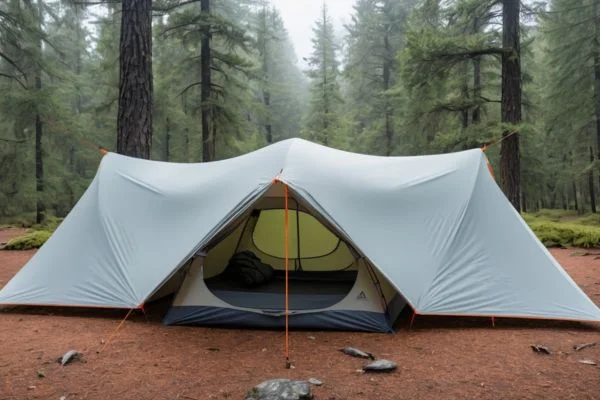Choosing the right tent is a crucial decision for any camping enthusiast. Whether you’re planning a multi-day trek through the mountains or a family weekend in the woods, the type of tent you select can make or break your experience. Two popular categories dominate the market: ultralight tents and traditional tents. Each has its strengths and drawbacks, and the best choice depends on your specific camping style and needs.
In this article, we’ll compare ultralight and traditional tents in terms of weight, durability, comfort, price, and more. By the end, you’ll have a clear understanding of which option suits you best.
What Are Ultralight Tents?
Ultralight tents are designed with weight as the top priority. Often favored by backpackers, thru-hikers, and minimalist campers, these tents use lightweight materials and streamlined designs to minimize bulk.
Key Features of Ultralight Tents:
- Weight: Typically under 3 pounds
- Materials: High-tech fabrics like Dyneema or thin nylon
- Setup: May use trekking poles instead of traditional tent poles
- Capacity: Often smaller, designed for 1–2 people
What Are Traditional Tents?
Traditional tents, on the other hand, are built for comfort and durability. These are the go-to choice for car campers, families, and those who don’t need to carry their tent over long distances.
Key Features of Traditional Tents:
- Weight: Usually 4–10 pounds or more
- Materials: Heavier polyester or thicker nylon
- Setup: Includes sturdy poles, often freestanding
- Capacity: Wide range, from 2-person to large family tents
Key Comparisons: Ultralight vs. Traditional Tents
1. Weight and Portability
- Ultralight Tents: As the name suggests, ultralight tents excel in this category. They’re designed to reduce your pack weight significantly, making them ideal for long-distance hikes or trips where every ounce counts.
- Traditional Tents: While heavier, traditional tents offer more features and sturdier construction. They’re better suited for car camping or short hikes where weight isn’t a primary concern.
Winner: Ultralight tents for backpackers; traditional tents for car campers.
2. Durability
- Ultralight Tents: Made from thinner, more fragile materials, ultralight tents require careful handling. They may not withstand extreme conditions or heavy use as well as traditional tents.
- Traditional Tents: Built with thicker fabrics and robust poles, these tents can endure rough conditions, heavy winds, and extended use.
Winner: Traditional tents for long-term durability.
3. Comfort and Space
- Ultralight Tents: To save weight, ultralight tents often compromise on interior space. Many models have a low profile, minimal headroom, and limited storage options.
- Traditional Tents: With higher ceilings, roomier interiors, and additional features like vestibules and gear pockets, traditional tents provide a more comfortable camping experience.
Winner: Traditional tents for comfort.
4. Weather Resistance
- Ultralight Tents: These tents can handle rain and moderate wind, but their lightweight materials may struggle in extreme conditions like heavy snow or high winds.
- Traditional Tents: Designed with rugged weather in mind, traditional tents often have superior waterproofing, sturdier poles, and better protection from harsh elements.
Winner: Traditional tents for extreme weather.
5. Price
- Ultralight Tents: High-tech materials and specialized designs often make ultralight tents more expensive than traditional ones.
- Traditional Tents: These tents come in a wider range of prices, with more affordable options available for budget-conscious campers.
Winner: Traditional tents for affordability.
When to Choose an Ultralight Tent
Ideal for:
- Backpacking and Thru-Hiking: If you’re covering long distances, every ounce matters. An ultralight tent minimizes pack weight while still providing shelter.
- Minimalist Camping: For those who embrace simplicity and want only the essentials, ultralight tents are a perfect match.
- Mild Weather Trips: Best for camping in fair weather or light rain, where durability isn’t a major concern.
Recommended Ultralight Tents:
- Zpacks Duplex: A top choice for thru-hikers, weighing just over 1 lb.
- Nemo Hornet Elite: Lightweight with excellent ventilation, perfect for 1–2 campers.
When to Choose a Traditional Tent
Ideal for:
- Family Camping: Traditional tents offer the space and features needed for a comfortable group experience.
- Car Camping: Weight isn’t an issue, so you can prioritize comfort and durability.
- Extreme Weather: If you’re camping in snow, wind, or heavy rain, the sturdier design of a traditional tent is essential.
Recommended Traditional Tents:
- Coleman Sundome: Affordable and spacious for casual camping trips.
- REI Co-op Kingdom: A versatile option for families or groups, offering comfort and weather resistance.
Finding a Middle Ground: Hybrid Tents
For those who want the best of both worlds, hybrid tents are a great solution. These tents combine lightweight materials with traditional tent features, offering a balance of portability and durability.
Examples of Hybrid Tents:
- Big Agnes Copper Spur HV UL: Lightweight but roomy, perfect for backpackers who want extra comfort.
- MSR Hubba Hubba NX: Compact and weather-resistant, ideal for versatile trips.
Final Thoughts
The choice between an ultralight tent and a traditional tent depends on your camping style, the types of trips you take, and your personal preferences.
- Choose an ultralight tent if you’re focused on reducing weight and covering long distances.
- Opt for a traditional tent if you prioritize comfort, durability, or camping with a group.
For many outdoor enthusiasts, having one of each type is the ultimate solution. That way, you’re prepared for any adventure, whether it’s a challenging backpacking trek or a relaxing family outing.
Reviewed and updated on 01/24/2025




